3 Ways to Create Data Connections in Oracle Analytics Cloud
Oracle Analytics Cloud (OAC) offers a robust set of data connections you can use as an engineer. These range from connecting to local files, creating localized data models, or connecting to enterprise-level systems. In this tutorial, I will break down three methods for creating data connections in Oracle Analytics Cloud.
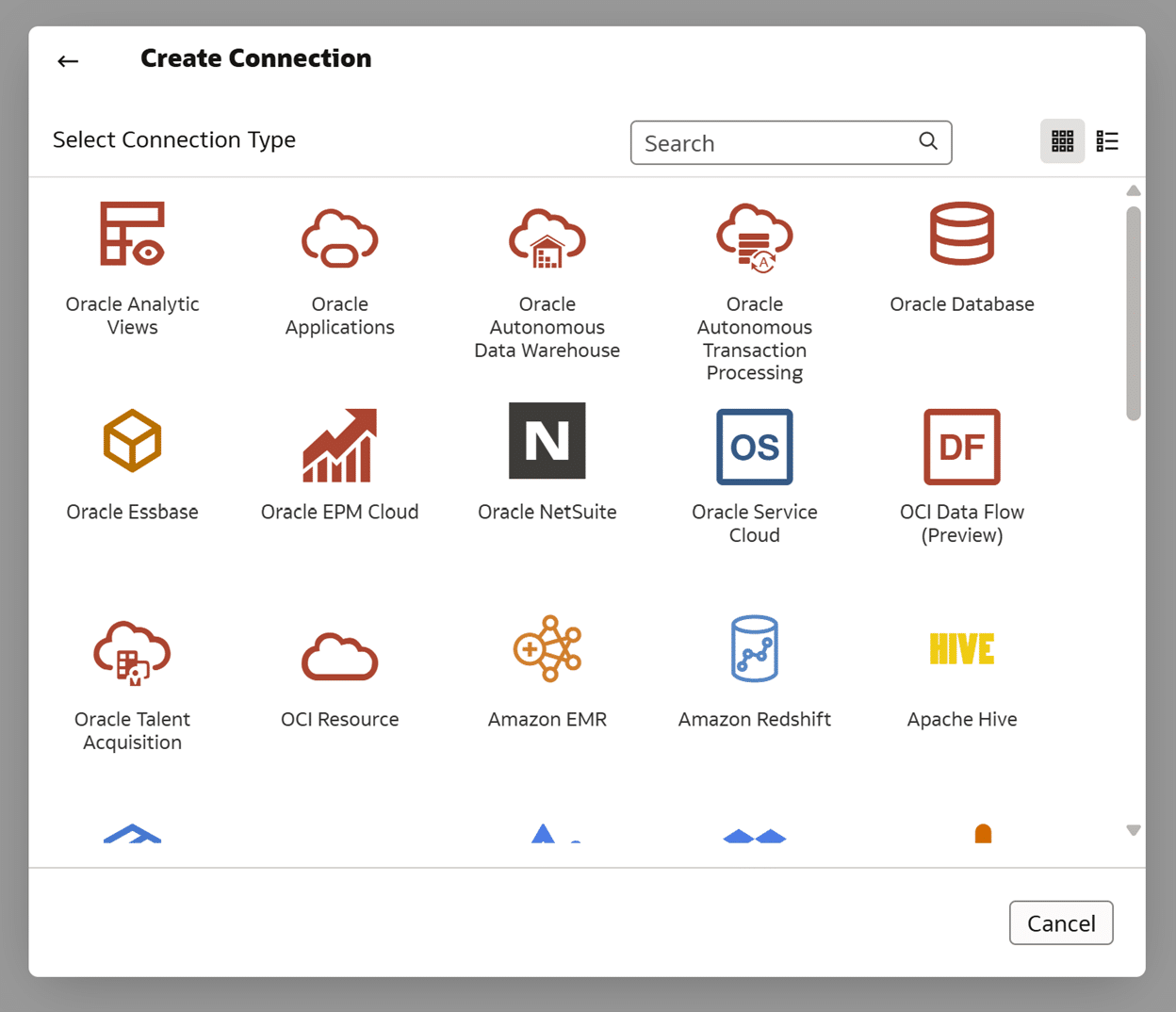
To get started, I have signed into my OAC instance and navigated to the Home page. From this page, there are several ways to begin creating a data connection. My preferred method is to click on the Create button in the top right corner of the interface, then click on Dataset. Another method is to click the Connect to Your Data card.
How to Set Up Oracle Cloud Infrastructure for Oracle Analytics Cloud
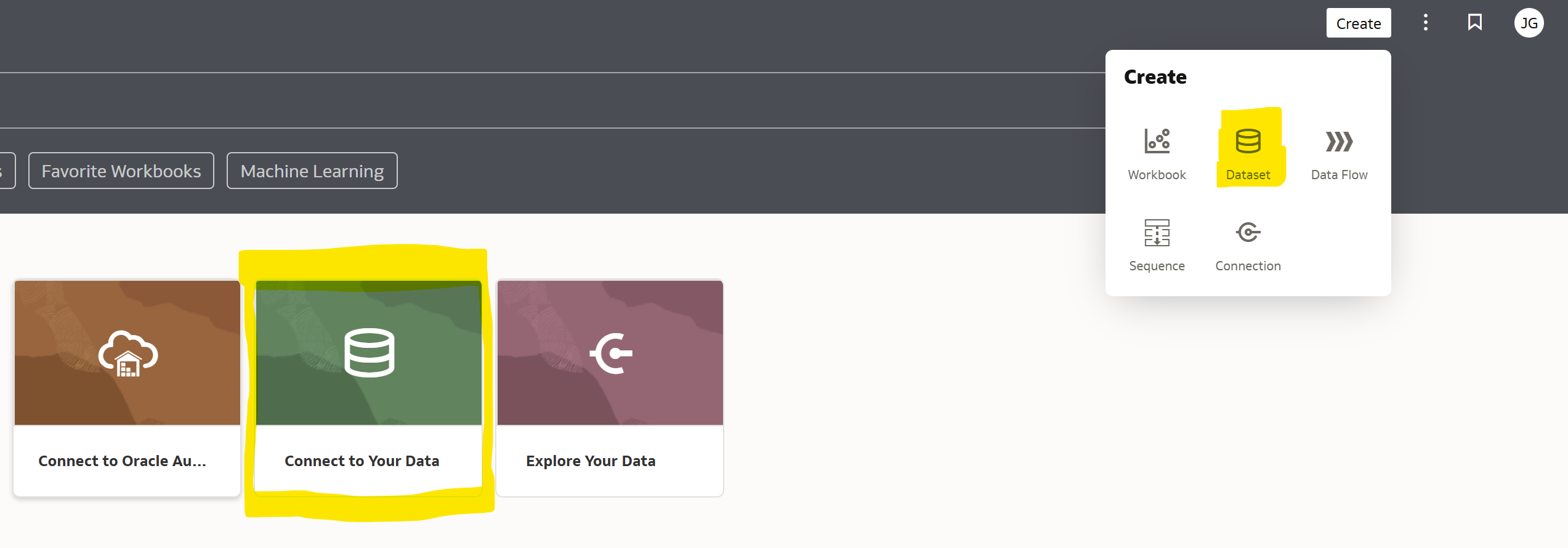
Create a free account, or login.
Unlock this tutorial and hundreds of other free visual analytics resources from our expert team.
Already have an account? Sign In
Following either of these methods, you will land on the Create Dataset pane.

Creating a data connection in Oracle Analytics Cloud from a file
The first type of data connection you can create is uploading a file from your computer. As engineers, we are often asked to do this but know it comes with its own limitations. As an example, this will create a static connection to that file. To refresh that data or a workbook connected to it will take coordination with whoever provided the file or the system it was extracted from. This is one of several considerations you will need to think about when using this method to create a dataset.
To begin, click on the “Drop data file here or click to browse” option from the pane. This will access your File Explorer and allow you to select a file from your computer. For this tutorial, I will select the Sales table from Playfair Data’s Proxy dataset. Doing so will give me a preview of the data from the pane as shown below.
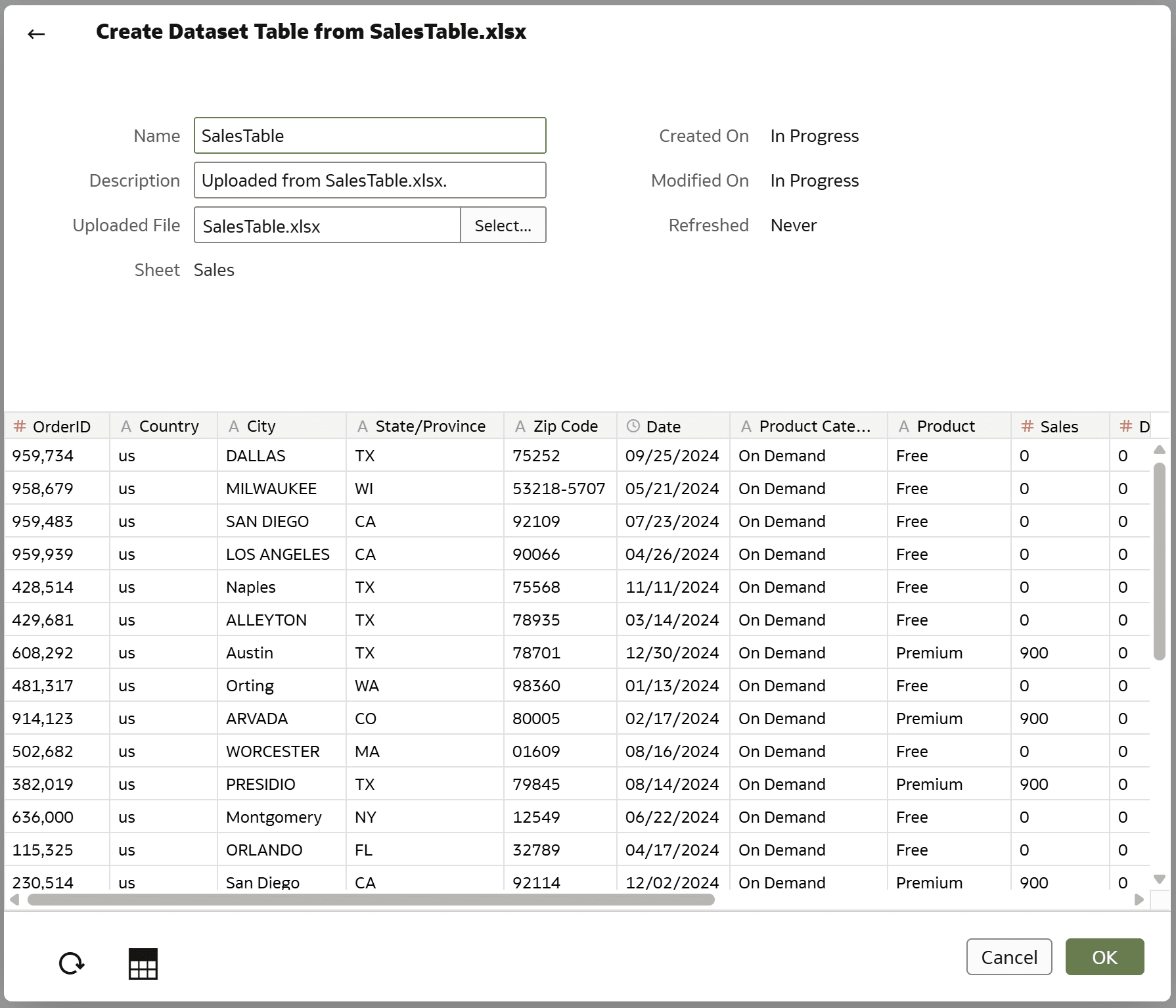
Next, I will click OK in the bottom-right corner of the pane. Doing so will add the Sales Table to the canvas and give you a detailed view of the data; including distribution, dimension members, and a row-level preview for all the measures and dimensions. This can be a great way to familiarize yourself with the data.
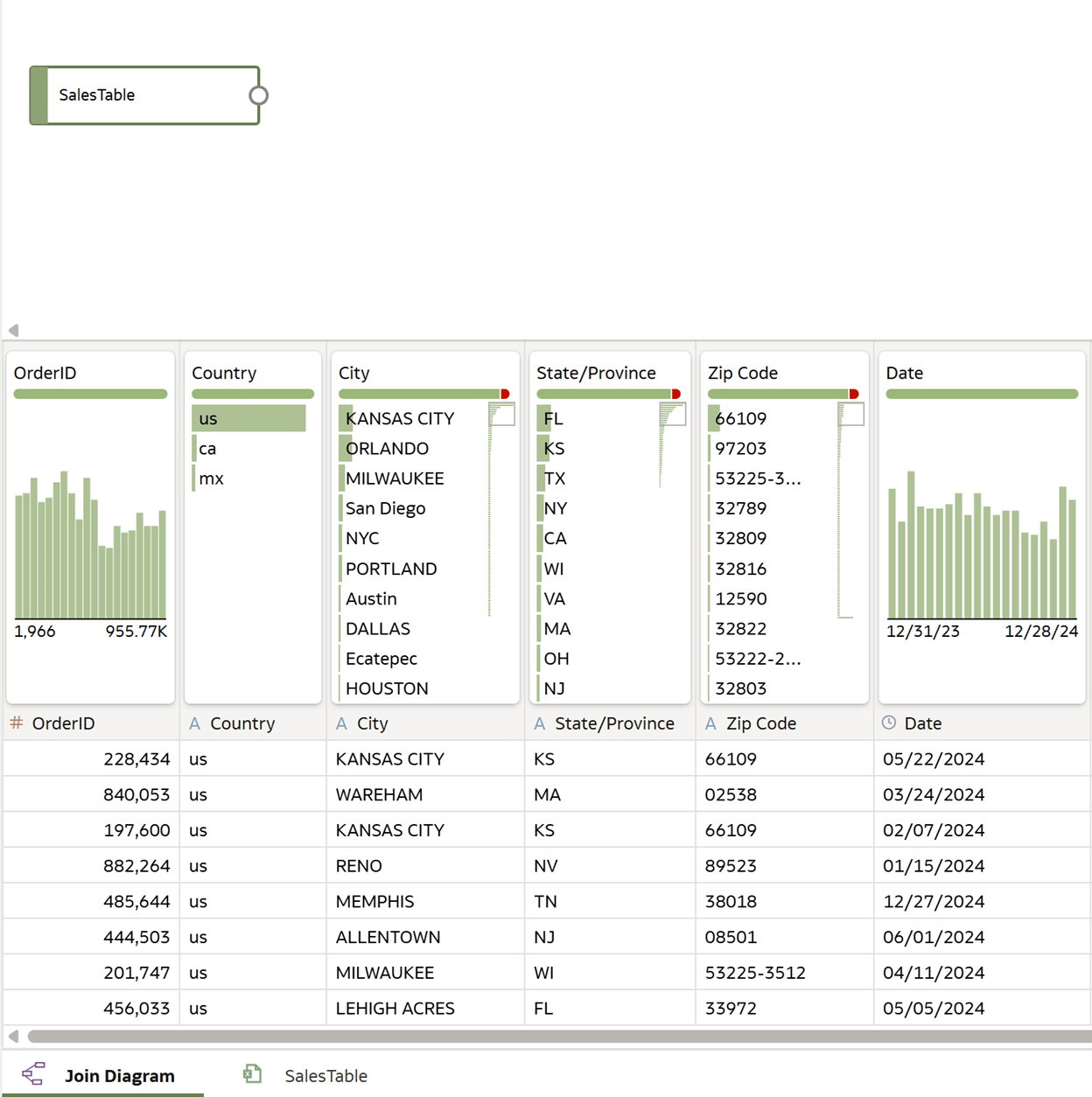
Now, simply change the name of your dataset by clicking on “New dataset” at the top left of the interface and entering a new name. For this tutorial, I will call this dataset “Sales Table Example”.
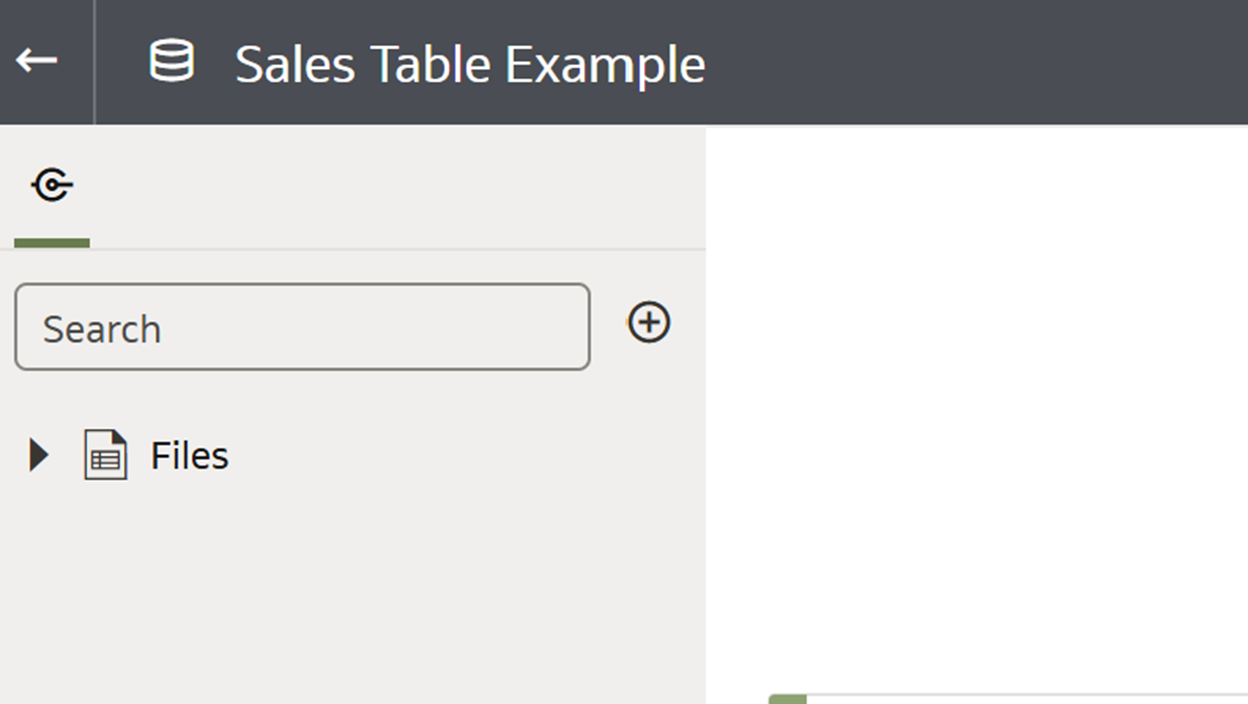
Then I will click save in the top-right corner of the interface.
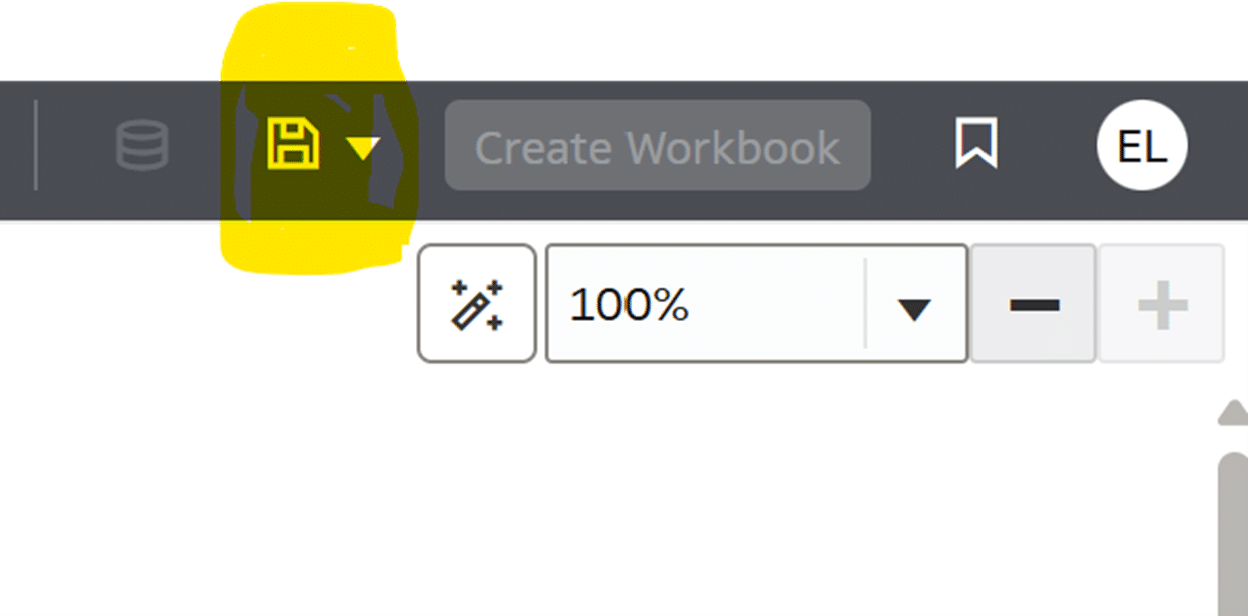
Navigating back to the home screen of OAC, I will select the Data tab under the search bar and you will see the new dataset you created from this location.
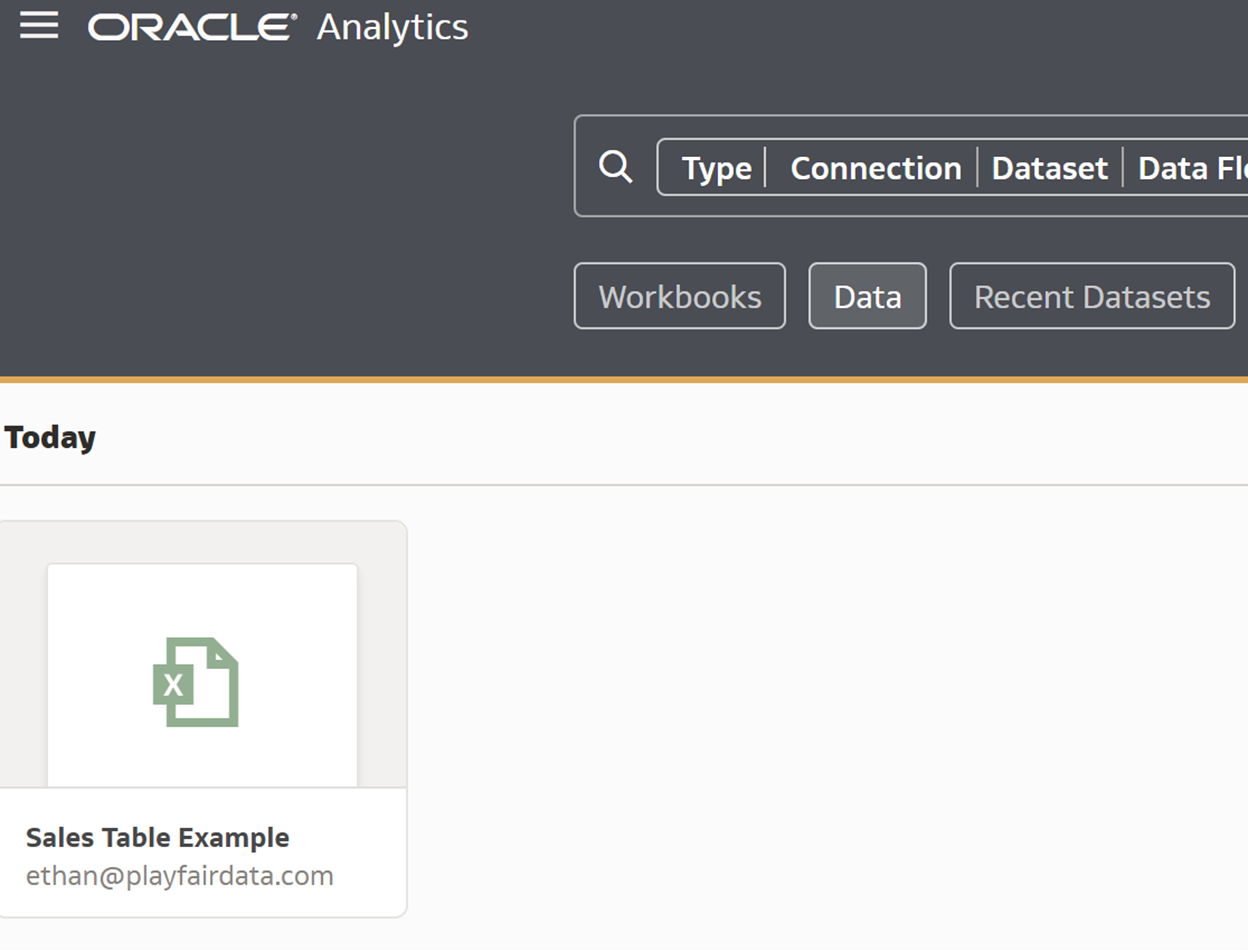
Creating a data connection using Local Subject Area
Local Subject Area connections, or LSA, are where you would create a data connection using OAC’s Semantic Layer data modeling. For this tutorial, I will show you how to connect to the data using the LSA option, as it will be extremely useful for your engineers and stakeholders to access data this way.
First, you would use the Semantic layer to create and define the data source itself. Once the data model is created, you would then create a Subject Area. The Semantic layer in OAC is a separate tool and process that I will cover in detail at a later time. Just know it is where you can define datasets with common measures and methodology for your users to connect to. The advantage for you is it helps everyone within your organization use and follow the same methodology.
After this is completed, you will click Create in the top-right corner of the Home page in OAC, then select Dataset.
Note: Defining a dataset in the Semantic layer has many benefits. A key benefit is the ability to define joins, create common calculations, and document the data. This helps analysts stay consistent and follow approved methodologies across workbooks.

From the new pane that appears, select Local Subject Area. This will allow you to connect to any subject areas you have provisioned using OAC’s Semantic Layer.
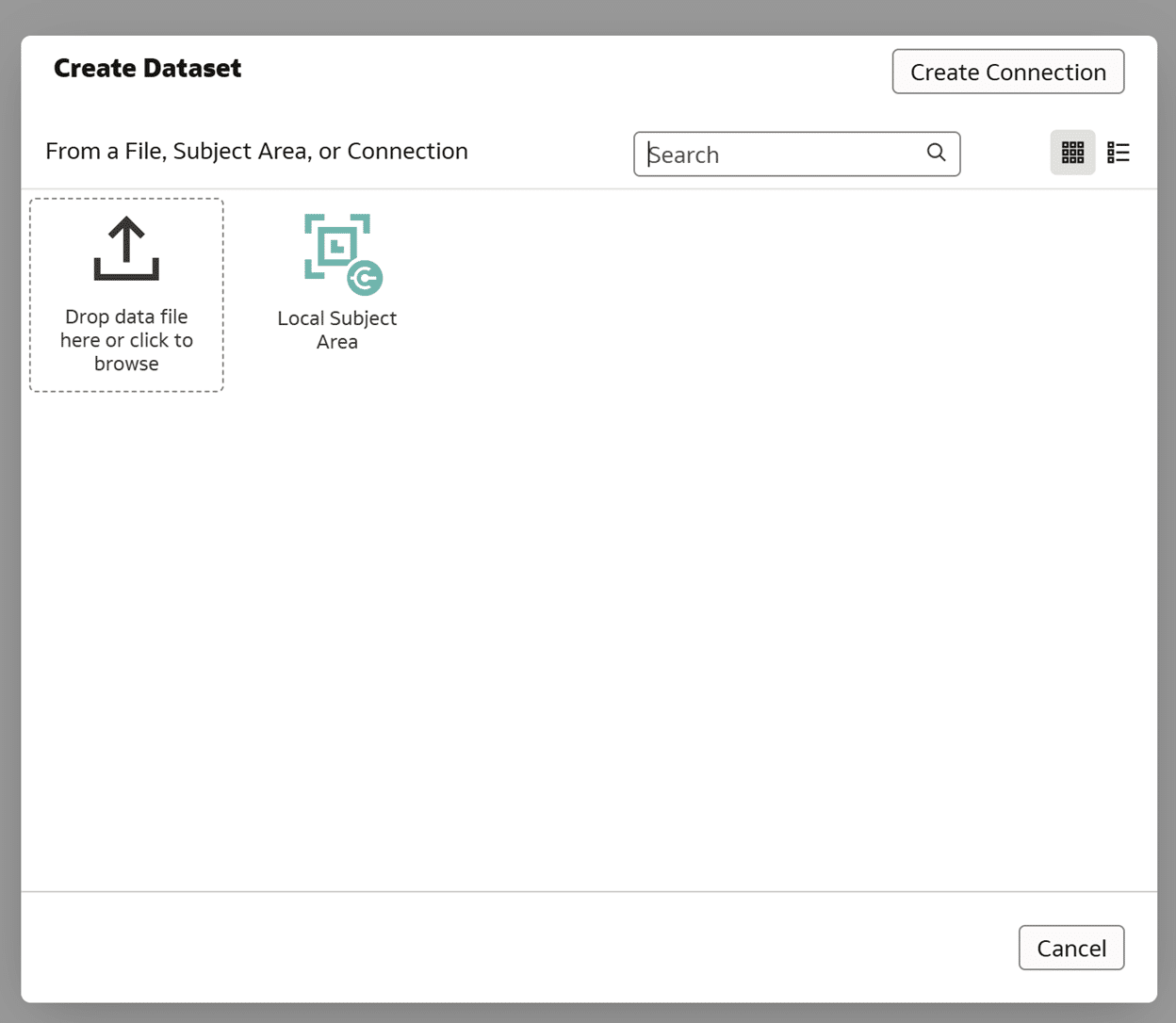
Creating data connections from databases and systems
OAC provides you with a large range of “Connectors”. These are pre-built and easy-to-use API connections to databases or systems. To create a dataset from a connection, click Create in the top-right corner of your Home Page interface, then select Dataset.

Next, choose Create Connection in the top right corner of the Create Dataset pane.
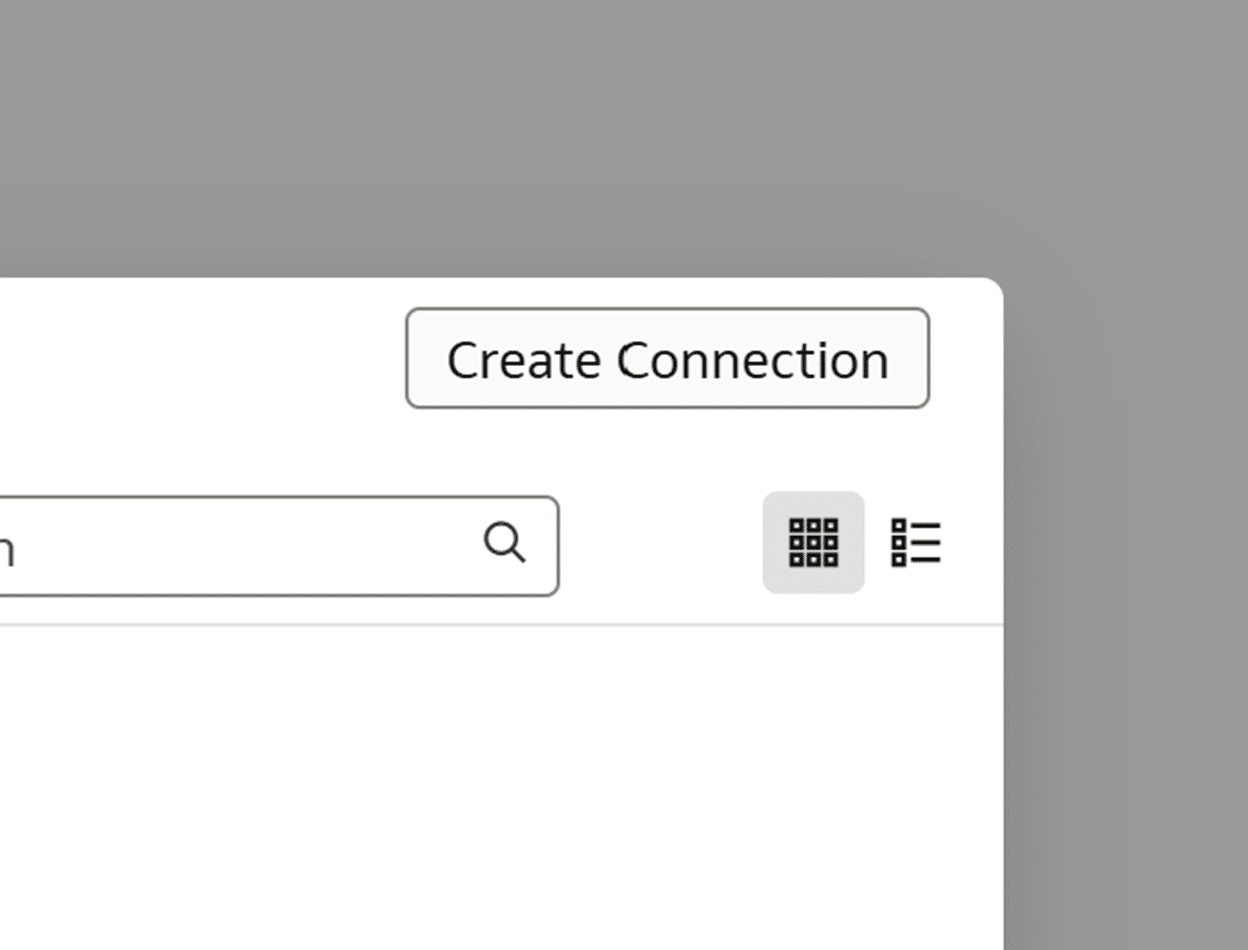
From the next pane, you can browse all the connectors that OAC has established.
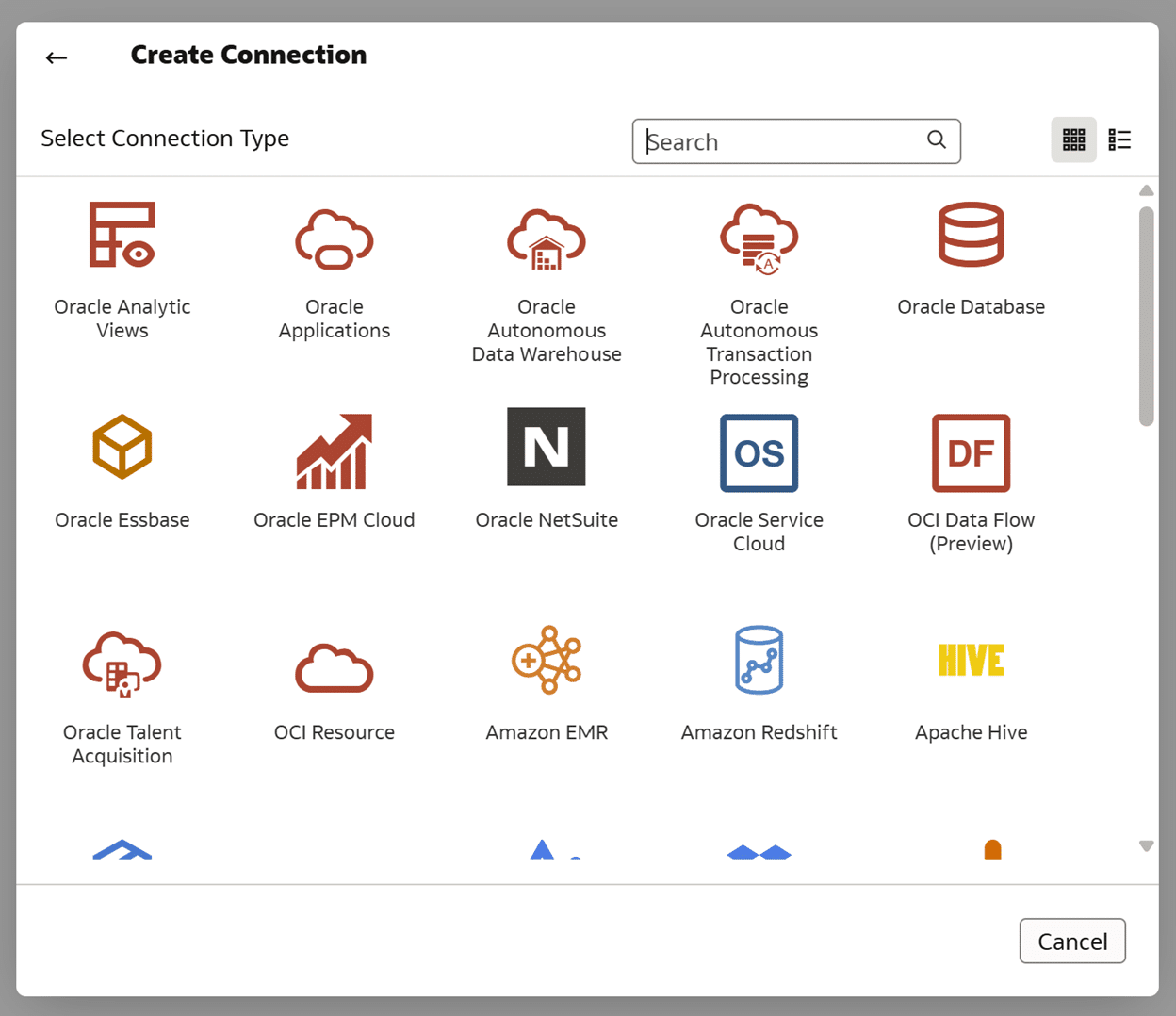
As you can see, there are quite a few to common data connections like Oracle Database, Snowflake, Amazon Redshift, etc.
Once you find the connector you are looking for, you will select it from the list and then enter the information required to authenticate and connect.
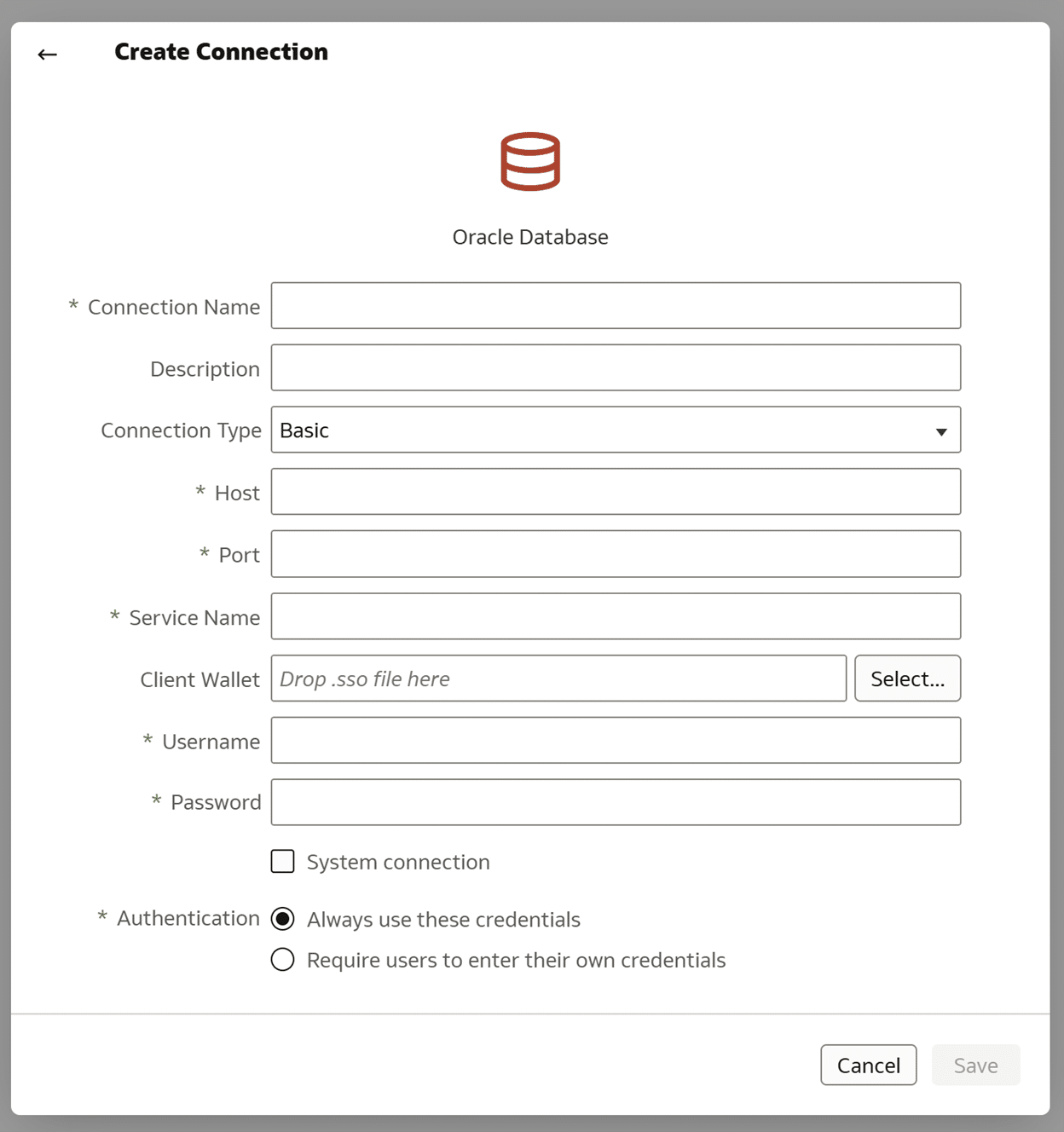
Conclusion
As you can see, there are a lot of ways and formats you can use to create Datasets in OAC. Accessing your data and preparing it for analysis is a big part of the process in visual analytics. After this tutorial, you should be well-equipped to create data sources and begin unlocking insights from your data.
Until next time,
Ethan Lang
Related Content
How to Setup Oracle Cloud Infrastructure for Oracle Analytics Cloud
Trying to navigate Oracle Cloud Infrastructure (OCI) for the first time can be an overwhelming experience with all the applications,…
Winning the Oracle Analytics Cloud Data Visualization Challenge
What better way to start the year than for the Playfair Data team to have won yet another award! Our…
Dan Bunker
Learn about the Oracle Analytics Cloud authoring interface This video will help orient you with the Oracle Analytics Cloud authoring…
